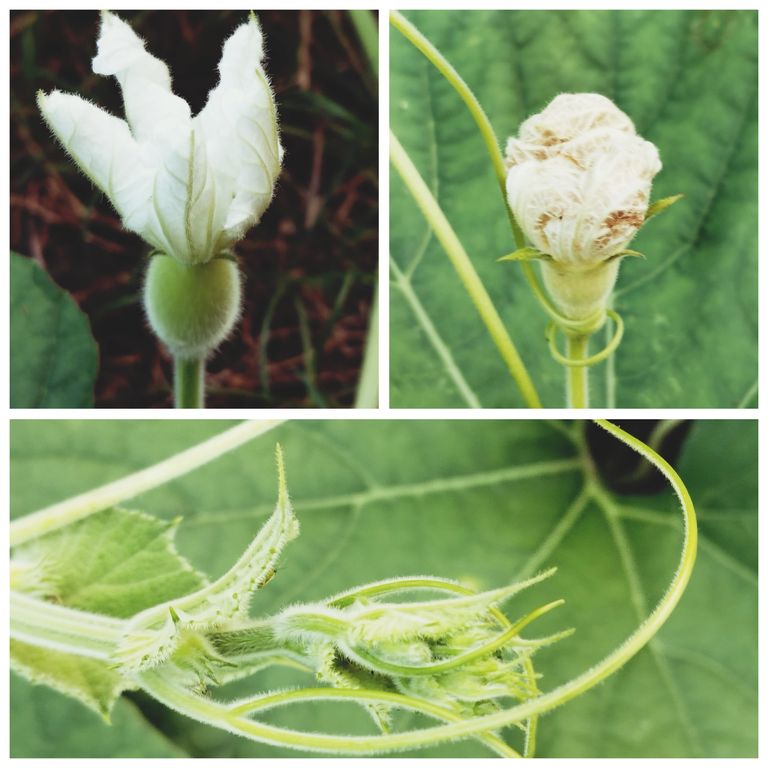
Hybrid Bottle Gourd Cultivation Guide.
Bottle gourd, scientifically known as Lagenaria siceraria, is a popular vegetable in tropical and subtropical regions. Hybrid varieties have gained popularity for their enhanced yield, uniform size, and disease resistance. Here’s a step-by-step guide to cultivating hybrid bottle gourd effectively:
- Selecting the Right Hybrid Variety
When choosing a hybrid variety of bottle gourd, consider factors such as yield potential, disease resistance, and adaptability to your climate. Common hybrid varieties include:
Pusa Hybrid - Known for high yield and pest resistance.
Arka Bahar - Popular in India for its large fruit size and vigor.
Punjab Komal - Highly adaptable with good quality fruits.
- Climate and Soil Requirements
Climate: Bottle gourd grows best in warm and humid climates, with temperatures between 20-30°C. Avoid extreme cold or high temperatures as they hinder growth and flowering.
Soil: Ideal soil is sandy loam to loamy soil, rich in organic matter, with a pH of 6.5-7.5. The soil should be well-drained as waterlogging can lead to root rot and other diseases.
- Land Preparation
Prepare the land thoroughly for bottle gourd cultivation:
Tilling: Perform deep plowing (2-3 times) to break up compact soil layers.
Manure and Fertilizers: Apply well-decomposed cow dung or compost (8-10 tons/acre). Organic matter improves soil structure and boosts fertility.
- Sowing the Seeds
Seed Treatment: Soak seeds in warm water for 12-24 hours before sowing to speed up germination.
Planting Time: Hybrid bottle gourd can be sown in two seasons—during February-April for the summer crop and June-August for the monsoon crop.
Spacing: Maintain a distance of 2-3 meters between rows and 1-1.5 meters between plants within each row.
- Fertilizer Application
Nutrients: Hybrid bottle gourds require nitrogen (N), phosphorus (P), and potassium (K).
Basal Dose: Apply 60-70 kg of nitrogen, 40 kg of phosphorus, and 40 kg of potassium per acre at the time of land preparation.
Top Dressing: Additional nitrogen (around 30-40 kg/acre) should be applied at the flowering and fruiting stages.
- Irrigation Practices
Bottle gourd requires consistent moisture levels.
Frequency: Irrigate immediately after sowing and continue at 7-10 day intervals during the growing period, especially in dry seasons.
Drip Irrigation: Ideal for water conservation and consistent moisture supply, promoting better yield.
- Weed Management
Regular weeding is essential in bottle gourd cultivation:
Manual Weeding: Remove weeds every 15-20 days to ensure nutrients are available for the crops.
Mulching: Organic or plastic mulching helps retain moisture and suppress weed growth, reducing manual labor.
- Pest and Disease Management
Common Pests:
Aphids and fruit flies can damage flowers and young fruits.
Use neem oil or recommended insecticides to control these pests.
Common Diseases:
Powdery Mildew: Causes white powdery spots on leaves, controlled by spraying sulfur-based fungicides.
Downy Mildew: Yellow spots on leaves, treated with copper-based fungicides.
- Training and Pruning
Hybrid bottle gourds benefit from vertical support for optimal growth:
Trellising: Use bamboo or net trellises to support vines, improving air circulation and sunlight exposure.
Pruning: Remove weak or extra side shoots to focus plant energy on fruit-bearing branches, resulting in larger fruits.
- Harvesting and Yield
Harvesting Time: Hybrid bottle gourds are ready for harvest within 45-50 days after sowing, depending on the variety and growing conditions.
Yield: Hybrid varieties typically yield around 20-25 tons per hectare if proper care is taken. Harvest fruits when they are young and tender to ensure quality.
- Post-Harvest Care
Storage: Bottle gourd has a short shelf life, so refrigerate or consume fresh.
Packaging: Pack in well-ventilated containers to avoid moisture accumulation, which can lead to rotting during transportation.
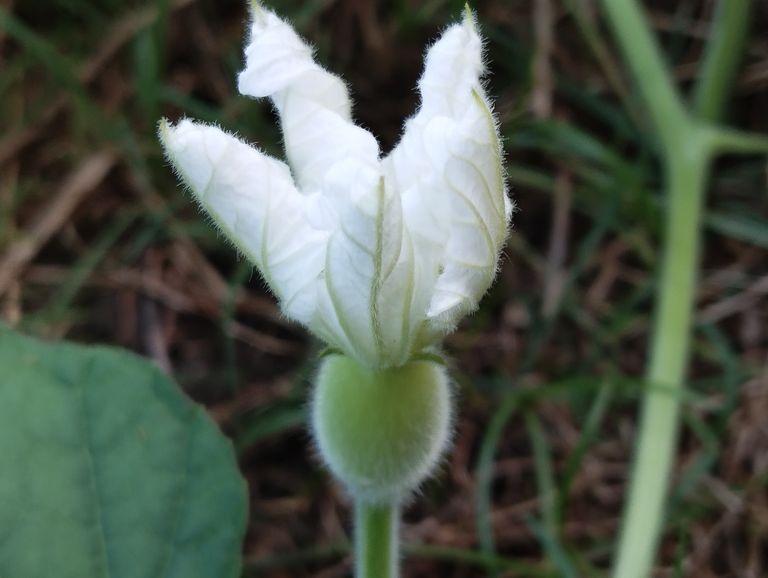
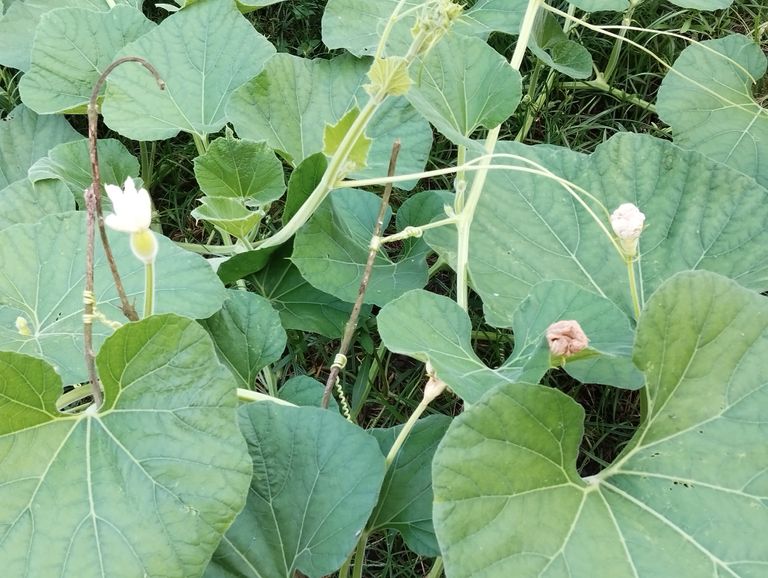
Bottle gourd, known as "lau" in Bengali, is a popular vegetable in many regions, prized for its tender flesh and versatile culinary uses. However, like many plants, bottle gourd is susceptible to several diseases and pests, which can reduce yield and damage the plant. Understanding these issues and learning effective management strategies can help gardeners and farmers maintain healthy bottle gourd plants. Here’s a guide on common diseases and pests that affect bottle gourd plants and how to prevent or control them.
- Powdery Mildew
Symptoms: Powdery mildew appears as white, powdery patches on the leaves, stems, and sometimes on the fruits. Over time, the affected leaves can turn yellow and dry out, leading to reduced plant health and yields.
Cause: It is caused by fungal spores that thrive in warm, dry conditions with high humidity at night.
Control:
Cultural Control: Ensure proper spacing between plants to improve air circulation. Water at the base of the plant to avoid wetting the leaves.
Chemical Control: Use sulfur-based fungicides or potassium bicarbonate sprays as per the guidelines. Neem oil sprays can also be effective in organic management.
- Downy Mildew
Symptoms: This disease starts as small, yellow spots on the upper surface of leaves and eventually turns brown. The undersides of the leaves may have a purple or greyish moldy appearance.
Cause: Caused by a fungal pathogen, downy mildew is common in moist and humid conditions.
Control:
Cultural Control: Remove any affected leaves to prevent the spread. Avoid watering from overhead, as this can increase humidity on the leaves.
Chemical Control: Apply fungicides containing mancozeb or copper-based products to control the spread of the disease.
- Mosaic Virus
Symptoms: Mosaic virus leads to mottled, distorted leaves with yellow and green patches. Infected plants may exhibit stunted growth and reduced fruiting.
Cause: Mosaic virus is spread by aphids and other sap-sucking insects.
Control:
Cultural Control: Plant virus-free seeds and avoid planting bottle gourds near other susceptible crops. Regularly remove any infected plants.
Insect Control: Control aphids using insecticidal soaps or neem oil to reduce virus transmission.
- Anthracnose
Symptoms: Dark, sunken lesions appear on the leaves, stems, and fruits. In severe cases, leaves turn yellow and die, and fruits may develop blackened, sunken spots.
Cause: This fungal disease often occurs in warm, wet weather.
Control:
Cultural Control: Use disease-free seeds and avoid overhead watering. Rotate crops annually to prevent the buildup of the pathogen in the soil.
Chemical Control: Apply fungicides containing chlorothalonil or copper compounds to protect healthy plants.
- Root Rot
Symptoms: Root rot causes the roots to decay, resulting in wilting and yellowing of the plant. In severe cases, the plant may collapse and die.
Cause: Often due to overwatering and poor drainage, which encourage soil-borne fungal pathogens.
Control:
Cultural Control: Ensure well-draining soil and avoid excessive watering. Remove and discard affected plants to prevent the spread.
Chemical Control: Fungicides may not be very effective for root rot, so prevention through good cultural practices is key.
- Aphids
Symptoms: Aphids are small, green or black insects that cluster on leaves and stems. They suck the sap from the plant, causing leaves to curl, yellow, and deform.
Cause: Aphids reproduce quickly in warm conditions and can transmit viral diseases to plants.
Control:
Cultural Control: Remove heavily infested leaves or plants. Introduce natural predators, like ladybugs, to control aphid populations.
Chemical Control: Use insecticidal soaps, neem oil, or pyrethrin sprays as needed.
- Fruit Fly
Symptoms: Fruit flies lay eggs in young fruits, leading to larvae infestations. The fruits develop small holes, become soft, and may rot.
Cause: Fruit flies are attracted to the plant when fruits start to form, especially in warm weather.
Control:
Cultural Control: Use fruit fly traps or bag the fruits to prevent egg-laying. Remove and dispose of infested fruits immediately.
Chemical Control: Insecticides may be used, but it’s best to minimize chemical use during fruiting to protect the edible parts.
- Red Pumpkin Beetle
Symptoms: This beetle feeds on young leaves, stems, and flowers, creating holes and reducing plant vigor.
Cause: Common in warm climates, red pumpkin beetles are particularly attracted to cucurbits like bottle gourd.
Control:
Cultural Control: Use row covers to physically protect plants from beetles. Keep the area weed-free, as weeds can host beetles.
Chemical Control: Use neem oil or a mild insecticide if necessary, especially when beetle infestations are severe.
General Tips for Managing Bottle Gourd Diseases and Pests
- Rotate Crops: Avoid planting bottle gourd in the same spot every year to prevent soil-borne pathogens from building up.
- Water Wisely: Water at the base and avoid overhead watering to reduce the risk of fungal diseases.
- Inspect Regularly: Check plants regularly for early signs of disease or pests, and take immediate action to manage them.
- Use Resistant Varieties: Some bottle gourd varieties are bred for resistance to common diseases. Choosing resistant varieties can help prevent infections.
By implementing these preventive and control strategies, you can minimize the risk of diseases and pests affecting your bottle gourd plants, leading to healthier plants and higher yields. Happy gardening!
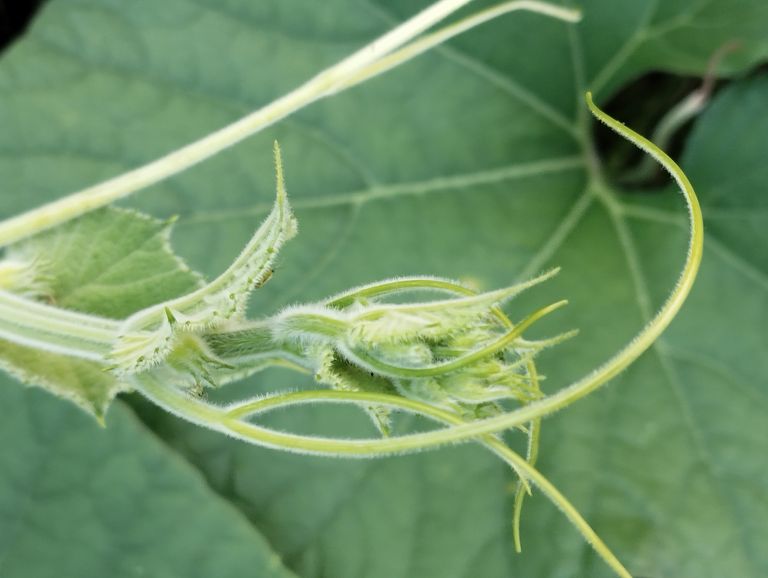
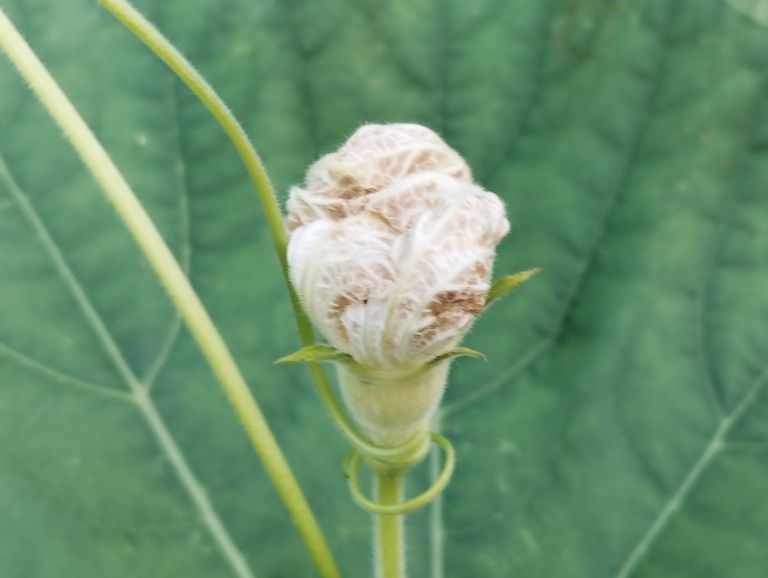
How to Grow Bottle Gourd from Seeds: A Complete Guide
Bottle gourd (Lagenaria siceraria), also known as calabash, is a popular vegetable in many Asian countries, cherished for its culinary and medicinal benefits. This climber plant is easy to grow and provides ample produce if cultivated properly. Whether you have a small backyard or a balcony garden, growing bottle gourd can be a rewarding experience. In this blog, we’ll go over the steps to plant and nurture bottle gourd from seeds to harvest.
- Selecting Quality Seeds
Choosing the right seeds is the first and most crucial step in growing bottle gourd. Here are some tips for selecting seeds:
Purchase from a Reputable Source: Choose seeds from a trusted seed supplier to ensure good quality and high germination rates.
Opt for Local Varieties: Bottle gourds have many varieties. Choose one that is well-suited to your climate, as it will have a higher success rate.
Fresh Seeds are Best: Use seeds that are from the most recent growing season for optimal germination.
- Preparing the Soil
Bottle gourd thrives in fertile, well-draining soil that retains moisture. Here’s how to prepare it:
Choose the Right Spot: Select a spot that receives full sunlight for at least 6–8 hours a day, as bottle gourd loves warmth and sunlight.
Enrich the Soil: Loosen the soil and mix in organic compost or well-rotted manure. Bottle gourd plants are heavy feeders, so they benefit from nutrient-rich soil.
Check Soil pH: Ideally, the soil pH should be between 6.0 and 7.5. Bottle gourd can grow in slightly acidic to neutral soil.
- Seed Sowing Process
Bottle gourd seeds have a hard outer shell, which can make germination slow. Here’s how to encourage faster and more successful sprouting:
Soak the Seeds: Soak the seeds in water for 24 hours before planting. This helps soften the outer shell and promotes quicker germination.
Direct Sowing or Seedling Transplanting: You can either directly sow the seeds outdoors or start them in small pots and transplant them later. If you live in an area with a short growing season, start indoors about 4–6 weeks before the last frost.
Sow the Seeds: Plant seeds about 1 inch deep and 2 feet apart in rows or mounds. If using pots, plant one or two seeds per pot.
- Watering and Caring for Seedlings
Once seeds are planted, proper watering and care are essential for healthy growth.
Watering: Water the seeds thoroughly after planting and maintain consistent moisture, especially during germination. Bottle gourds prefer moist but not waterlogged soil.
Mulching: Add a layer of mulch around the plants to retain soil moisture and reduce weed growth.
Provide Support: Bottle gourd plants are climbers, so set up a trellis or support system as the plant begins to grow. This allows the plant to grow vertically, improving air circulation and reducing the risk of fungal infections.
- Fertilizing the Plants
To encourage vigorous growth and fruit production, fertilize bottle gourd plants periodically.
Use Organic Fertilizers: Fertilize with organic compost or well-decomposed manure once every month.
Balanced N-P-K Fertilizer: Apply a balanced N-P-K fertilizer (nitrogen, phosphorus, potassium) during the flowering and fruiting stage to support growth and yield.
Avoid Over-Fertilization: While feeding is essential, over-fertilizing can lead to excessive foliage growth with fewer fruits. Stick to recommended amounts.
- Managing Pests and Diseases
Bottle gourd plants can be affected by pests like aphids, beetles, and diseases like powdery mildew. Here’s how to protect your plants:
Natural Pest Control: Use neem oil or other organic pesticides to keep pests at bay.
Hand-Picking: Regularly inspect the plant for pests and remove them by hand when possible.
Good Air Circulation: Ensure your plants have adequate spacing and avoid overhead watering to prevent fungal infections.
- Pollination
Bottle gourds are usually pollinated by insects, but hand-pollination can improve fruit set, especially if you notice a lack of pollinator activity.
Identifying Male and Female Flowers: Bottle gourd plants have separate male and female flowers. Male flowers appear first and can be identified by the lack of a small gourd behind the bloom.
Hand Pollination: Using a small brush, gently transfer pollen from the male flower to the stigma of the female flower. This can increase your yield if natural pollinators are scarce.
- Harvesting
Bottle gourds are ready to harvest around 60–75 days after planting, depending on the variety.
Signs of Ripeness: Young, tender gourds are best for cooking. Harvest them when they are 10–12 inches long and feel firm to the touch.
Regular Harvesting: Picking fruits regularly encourages the plant to produce more gourds throughout the season.
- Post-Harvest Care
After harvesting, store bottle gourds in a cool, dry place.
Refrigeration: You can store bottle gourds in the refrigerator to keep them fresh for up to two weeks.
Preserving Seeds: If you want to save seeds for the next season, allow a few gourds to mature fully on the vine, then collect seeds after drying.
Final Thoughts
Growing bottle gourd from seed can be a fun and fruitful gardening project, even for beginners. With the right care, you’ll be able to enjoy a bountiful harvest of this versatile vegetable. Not only is bottle gourd delicious, but it’s also nutritious, packed with vitamins, minerals, and antioxidants.
Whether you’re growing it for personal consumption or to beautify your garden with its lush vines, bottle gourd is a great choice for any garden. Happy gardening.
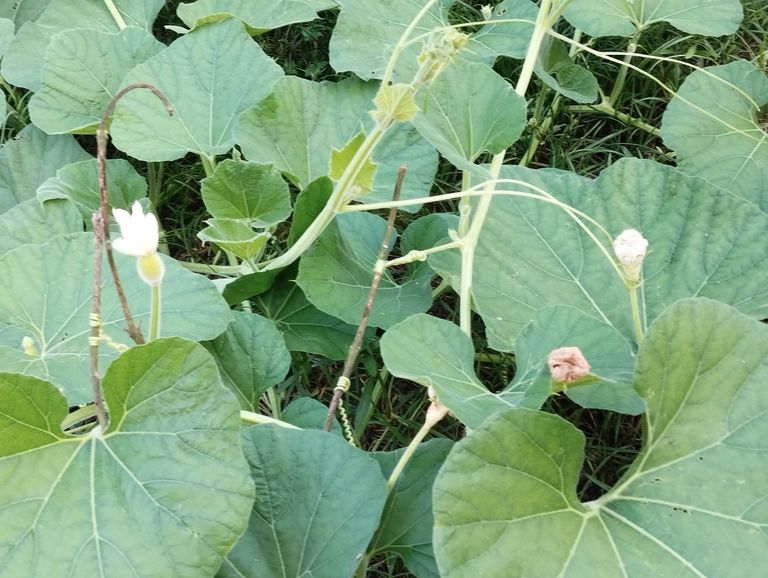
The Comprehensive Guide to Bottle Gourd: Structure, Nutritional Benefits, and Health Uses
Introduction
Brief overview of bottle gourd, commonly known as lau in Bengali.
Its origins and historical use in traditional medicine and cooking.
Importance in various cultural cuisines and its rise as a superfood.
- Botanical Description of Bottle Gourd
Scientific Classification: Kingdom, Family, Genus, Species.
Morphology:
Leaves: Description of the broad, heart-shaped leaves.
Stem: Overview of the climbing nature with tendrils.
Flowers: Large, white flowers that bloom in the evening.
Fruit: Varying sizes and shapes, ranging from round to elongated.
Growth Pattern: Discussion of its seasonal growth, how it climbs using tendrils, and suitable environments.
- Nutritional Profile of Bottle Gourd
Macronutrients: Carbohydrates, fiber, protein, and fats.
Vitamins: Vitamin C, Vitamin B-complex, Vitamin A.
Minerals: Potassium, calcium, magnesium, and iron.
Antioxidants and Phytochemicals: Their roles in promoting health.
- Health Benefits of Bottle Gourd
Digestive Health: Benefits for digestion due to its high fiber and water content.
Heart Health: Role in maintaining blood pressure and cholesterol levels.
Weight Loss: Low-calorie content and how it aids in weight management.
Skin Health: Benefits from vitamins and hydration.
Mental Well-being: Its cooling effect on the body and mind.
- Traditional Uses in Ayurvedic and Unani Medicine
Digestive Ailments: How it is used to treat indigestion and constipation.
Diabetes Management: Traditional uses for regulating blood sugar.
Skin Conditions: Applications in treating minor skin irritations.
Cooling Agent: Its use for balancing heat in traditional medicine.
- Culinary Uses of Bottle Gourd
Popular Dishes: Recipes from Indian, Bengali, and Southeast Asian cuisines.
Preparation Methods: Juicing, steaming, stir-frying, and soups.
Storage and Selection: Tips for selecting and preserving fresh bottle gourd.
- How to Grow Bottle Gourd at Home
Climate and Soil Requirements: Preferred conditions for optimal growth.
Planting: Seed selection, planting, and spacing.
Care and Maintenance: Watering, pest control, and support systems.
Harvesting: Signs that bottle gourd is ready to pick and store.
- Precautions and Possible Side Effects
Consumption Safety: Importance of cooking properly.
Toxicity Issues: Potential bitter compounds and their effects.
Allergic Reactions: Signs of potential intolerance.
Conclusion
Summary of bottle gourd’s nutritional, health, and culinary significance.